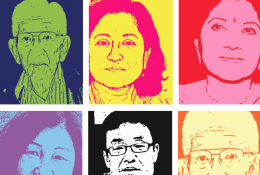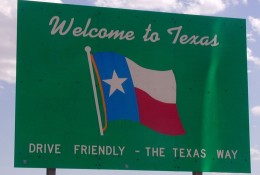Attitudes Toward Mass Deportation and Immigration Policy Preferences
Nearly 10,000 residents were surveyed regarding their preferences for various immigration policies, including mass deportation.

Attitudes Toward Mass Deportation and Immigration Policy Preferences
Nearly 10,000 residents were surveyed regarding their preferences for various immigration policies, including mass deportation.

An Alternative Approach to Measuring Student Immigrant Generation
The goal of this methodological study is to evaluate the efficacy of an innovative approach to create a proxy indicator of immigrant generation for school districts to use when data on immigrant generation or parent birthplace are unavailable.

Refugee Realities: Between National Challenges and Local Responsibilities in Houston, TX
This report provides a comprehensive picture of ongoing challenges to refugee resettlement in Houston.

Shared Prospects: Hispanics and the Future of Houston
The rich data from this research provide a rare opportunity to explore systematically the experiences and perspectives of the different Hispanic communities over time and to assess their prospects for the future.

Houston Area Asian Survey: Diversity and Transformation Among Asians in Houston
Survey data provides insight into Houston's diverse Asian communities.

Houston's Ethnic Communities: Third Edition
With immigration and economic transformation guiding shifts in the Houston area and across the country, this report draws on several years worth of survey data to capture the way these new realities are being experienced by members of Houston's ethnic populations.

Who are Harris County’s unauthorized immigrants? These charts detail their diverse backgrounds.
New estimates from the Migration Policy Institute shed light on Harris County’s 600,000-plus unauthorized immigrants.

Do Houston residents support mass deportation? Here’s what 9,800 of them said
On immigration, a strong majority of Houstonians agree: Increase pathways to citizenship, stop mass deportation, let “Dreamers” stay, and finally fix a broken system.

Seeking Solutions: Connect Community bolsters success of new immigrants in southwest Houston
Since its founding in 2016, Connect Community and its partners have put $126 million toward community development and holistic revitalization in the Gulfton and Sharpstown neighborhoods in southwest Houston.

Migrants from other states more likely to call Texas their new home
In 2022, millions of Americans were on the move from one state to another. According to the U.S. Census Bureau, Texas was the top destination in the country.

Fort Bend County found to be among the nation’s most prosperous for immigrants
In the past decade, immigrant populations fueled immense population growth in cities and suburbs in particular, according to a new report by the George W. Bush Institute. In the Houston metropolitan area, the report finds that immigrants are thriving best in Fort Bend County, ranked No. 8 in the country, and Brazoria County, ranked No. 15. Harris County was ranked No. 99.

Rice University
Kraft Hall
6100 Main Street, Suite 305
Houston, TX 77005-1892